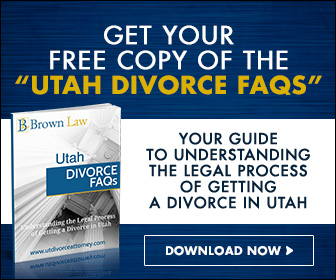Who Is a “Cohabitant” in Utah Protective Orders?
Definitions
A definition in the law is a funny thing because it doesn’t need to actually make any sense.
For example, I once saw a definition of “sexual violence” at a university that included “withholding communication” from a significant other.
Now, everyone knows not communicating with someone cannot possibly, by any stretch of the human imagination, be “sexual violence.” But, that’s the definition they went with anyway.
Another example: if you want to define white as black and day as night in a law, you can. That’s how arbitrary definitions can be.
Definition of “Cohabitant” in Utah Protective Orders
Utah laws contain some interesting definitions. Perhaps none more interesting than “cohabitant” in Utah’s Cohabitant Abuse Act.
Now, the Cohabitant Abuse Act is important because it’s where most Utah protective orders come from. So, if you want to know who you can get a protective order against, this definition is very important.
Here’s the definition:
| (2) | “Cohabitant” means an emancipated person pursuant to Section 15-2-1 or a person who is 16 years of age or older who:
|
| (3) | Notwithstanding Subsection (2), “cohabitant” does not include:
|
Got that? If you don’t, don’t worry. It’s complicated.
Examples of “Cohabitants” for the Purpose of Obtaining a Utah Protective Order
Here are some examples of cohabitants in Utah protective orders.
I’ll start out with the most common examples:
- People who have lived together as boyfriend and girlfriend or husband and wife. (How long they have to have lived together gets tricky.)
- People who have had a child together.
- People who are or were married — even if they aren’t married anymore.
Here are some of the less common examples:
- People who live as spouses, even if they never legally married or live under the same roof.
- Brothers-in-law (they’re related by marriage).
- Fourth cousins who have met each other once (they’re related by blood).
- People who saw each other once, had a one night stand, and the woman is pregnant.
- College roommates who haven’t seen in twenty years (they resided together).
- A pregnant surrogate who was implanted with someone else’s genetic child (she’s the biological parent of someone else’s unborn child).
I could go on, but you get the point.
When you get down to the nitty-gritty, lots of people related (by circumstance or blood) in lots of weird ways can get a protective order in Utah.
Who Usually Gets a Protective Order?
By far the most common “cohabitants” getting protective orders in Utah are people who live together in a romantic relationship, whether that be marriage or just living together.
The next most common are people who used to be married or in a romantic relationship, and they get in a violent fight after they break up.
These are really the types of folks the Cohabitant Abuse Act was meant to protect. The definition cohabitant just happens to include lots more types of folks.





